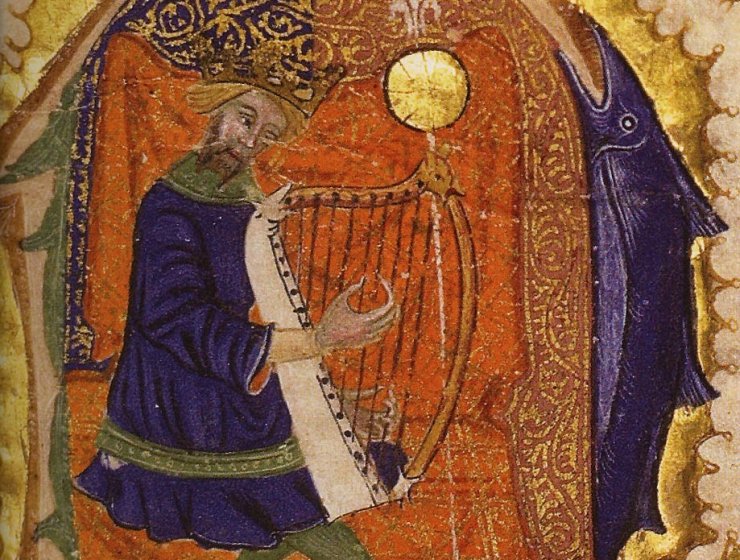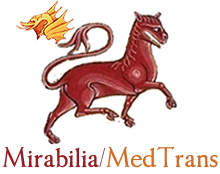
-Index-
John the Baptist in the Segon del Cartoixà, by Joan Roís de Corella
Jordi OVIEDO SEGUER
Original title: Joan el Baptista en el Segon del Cartoixà, de Joan Roís de Corella
In the field of religious-themed works of Roís de Corella, the work that is now presented is based on the peculiarity of one of the volumes, the second, that form the known as the Cartoixà, the catalan translation of the Vita Christi by Ludolph of Saxony, made by the valencian Joan Roís de Corella at the end of the 15th century. The Cartoixà is a work of own maturity, as constant features in Corella’s collection are gathered and characteristic nuances of our words are provided. The treatment of the figure of John the Baptist in the Segon will allow us to observe what are these and what elements distinguish the Cartoixà as part of creation, arising from a catechetical desire. This evangelical character symbolizes the passage between the Old Testament and the New; Corella will employ the resources of the literary language for the christocentric project that represents the Cartoixà.
Burgundy and German Empire in Curial. The centre of Europe seen from the periphery
Abel SOLER
Original title: Borgonya i l’Imperi Alemany en el Curial. El centre d’Europa vist des de la perifèria
The chivalric romance Curial e Güelfa (anonymous; datable ca. 1445-1448) is the most emblematic literary artefact of a court in Europe’s periphery, like the Neapolitan one of Alfonso the Magnanimous, where Catalan –also a «periphereal» language– was the most widespread. The king’s favourite painters were Flemish and the author of the romance was fascinated by the Burgundian cavalry-performance, played here by characters like the duke (Philip III the Pious), the lords of Bergues and Saint-Georges, the German duke of Kleve, etc. The Holy Roman Empire, the duchies of Bavaria and Austria, the kingdom of Hungary and other states in central Europe are well depicted in the romance, as the unknown writer had news about the courts, the diplomacy and the aristocratic circles from the heart of the continent.
Lletraferides in the convent, a female writing in the 16th century
Francisco José CONEJERO PASCUAL
Original title: Lletraferides als convents, una escriptura femenina al segle XVI
This article analyzes the importance of the «lletraferides» in the Catalan literary canon. This research goes deep into making visible the production of these women who directly or indirectly intervened in the literary praxis. Recognizing these leading figures is essential to be able to better understand society at that time and the literary fact. To unmask the literary praxis developed by these religious women, the inclusion of the gender perspective becomes apparent, since this methodology seems to echo the feminine literary fact despised by patriarchal normalization. Among these «lletraferides» we will emphasize Jerònima d’Aragó, since she is the promoter of the first version in the Iberian Peninsula to the Tractat dels diàlogos de la seràfica Caterina de Sena. The relevance of the holy Sienese throughout Europe is fundamental to the new way of understanding spirituality.
The image of medieval Christian monarchy in the Secondary Education
Francesc GRANELL SALES, Andrea MARTÍNEZ CARRILLO
Original title: La imatge de la monarquia medieval cristiana en l’Educació Secundària Obligatòria
Specialists in the Teaching of History unanimously accept that textbooks are the only –or the main– material used by teachers in Spain. Thus, this article analyzes the artistic images of the medieval Christian monarchy included in three school textbooks –one published by a major publisher and two by educational innovation groups – to confirm their use as a teaching resource. The results refer to didactic methodology, specifically to the ability to historical thinking.
An approach to urban space in the work of a poet: Marc Granell and València
Mireia FERRANDO SIMON
Original title: Aproximació a l’espai urbà en l’obra d’un poeta: Marc Granell i València
Marc Granell (València, 1953) is one of the most relevant Catalan poets of the last third of the 20th century and the beginning of the 21st century. He has described himself as a “urbanita”, because he has practically never lived outside his native València. The aim of this paper is to analyze how urban spaces are conceived in his poetry and to explore his vision about València, the city that has accompanied him throughout his 40 years of literary career.
Criteria for the production of the Dictionary of the literary work by Enric Valor. The nature (DOLEV-Natura)
Joan de Déu MARTINES LLINARES
Original title: Criteris per a la confecció del Diccionari de l’obra literària d’Enric Valor. La natura (DOLEV-Natura)
We present here the characteristics and criteria for making the Diccionari de l’obra literària d’Enric Valor. DOLEV-Natura. This writer, one of the leading Catalan language in Valencia the last centuries, uses a lexicon and a phraseology very close to the natural and rural environment of the south of Valencia, often little known by the average speaker. The structure and the digital character of the DOLEV-Natura will allow disseminate this lexical treasure mainly in the academic field and, likewise, approach it also to other people interested in the work of the Valencian writer.


















































































